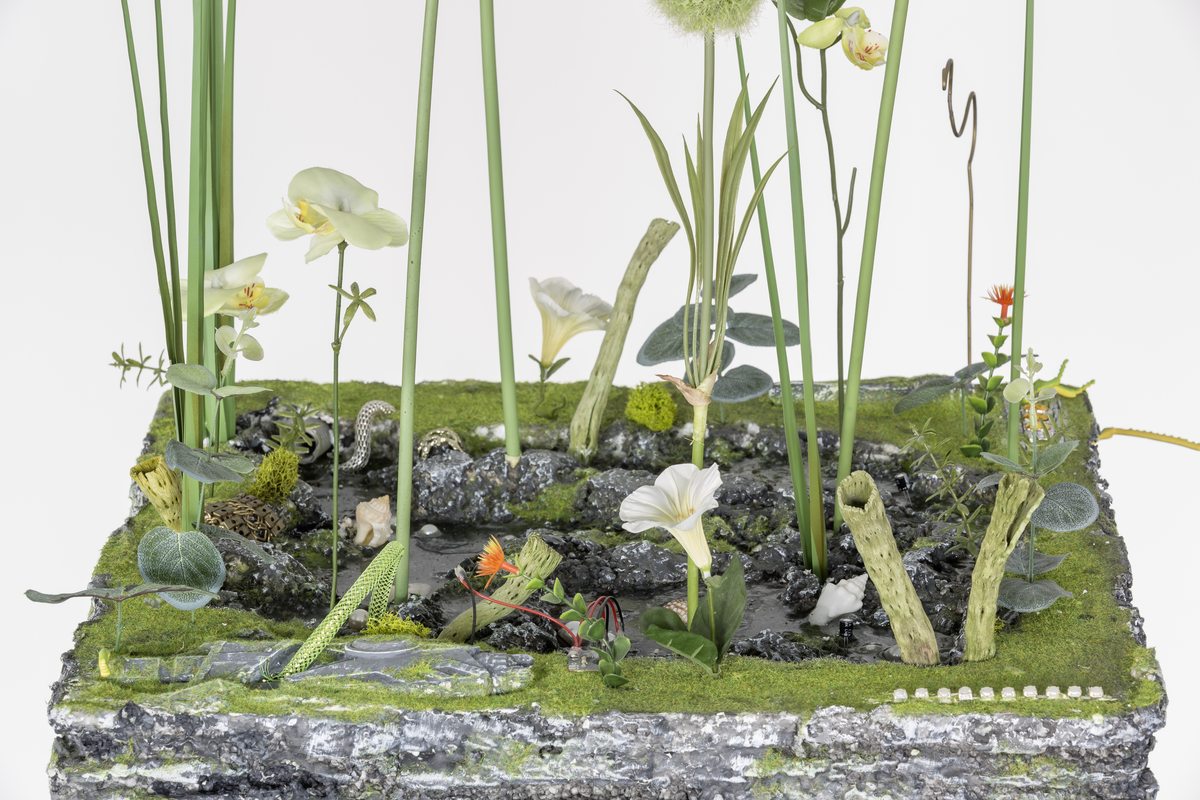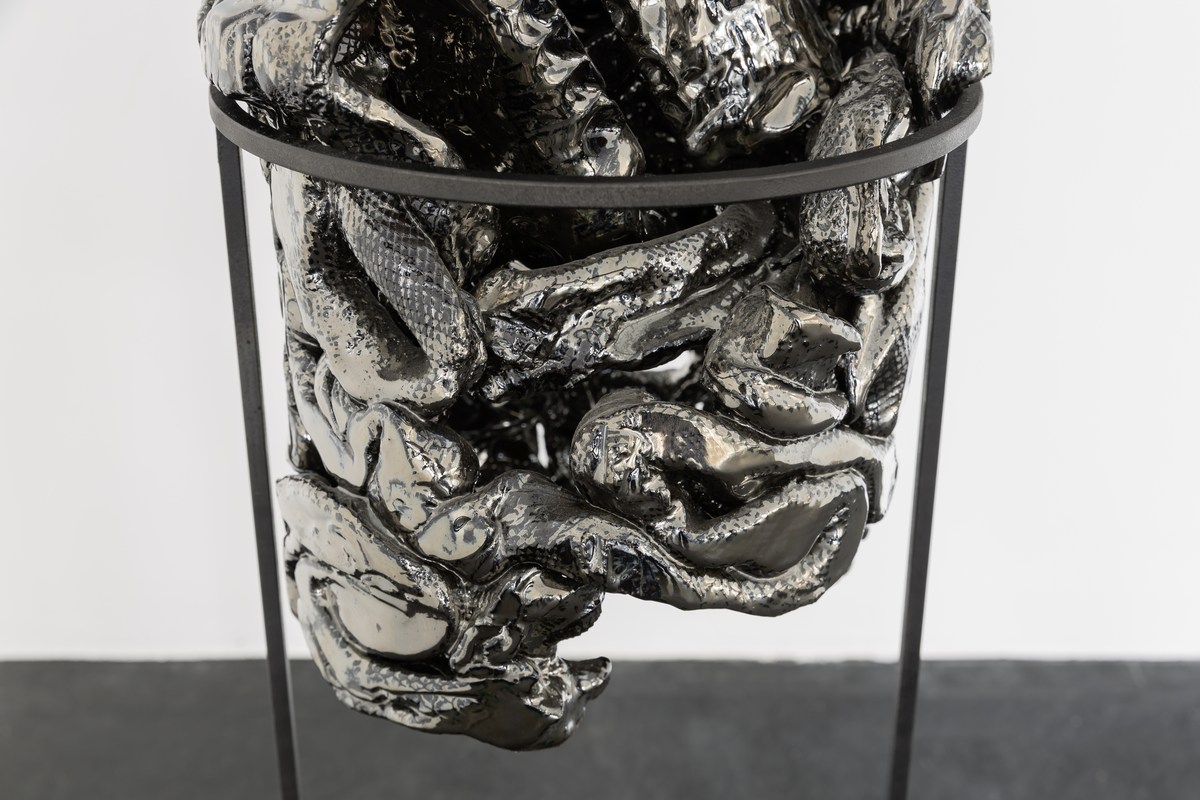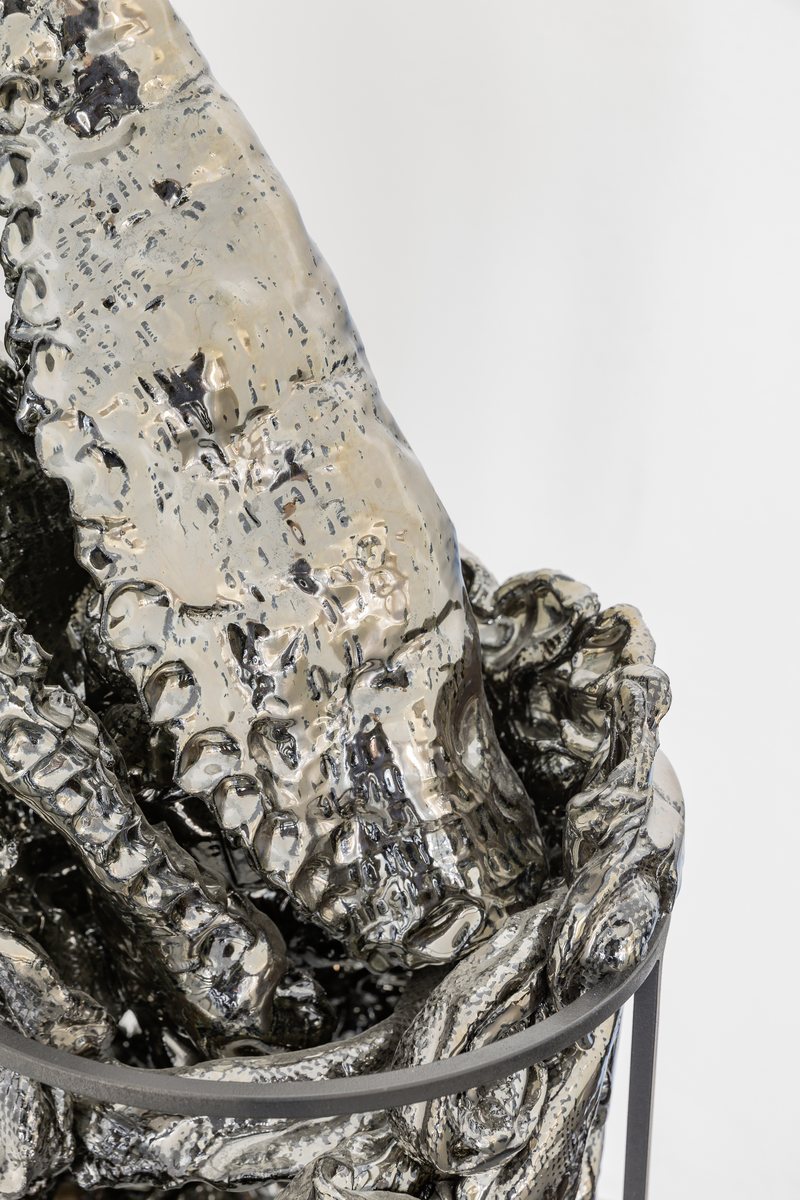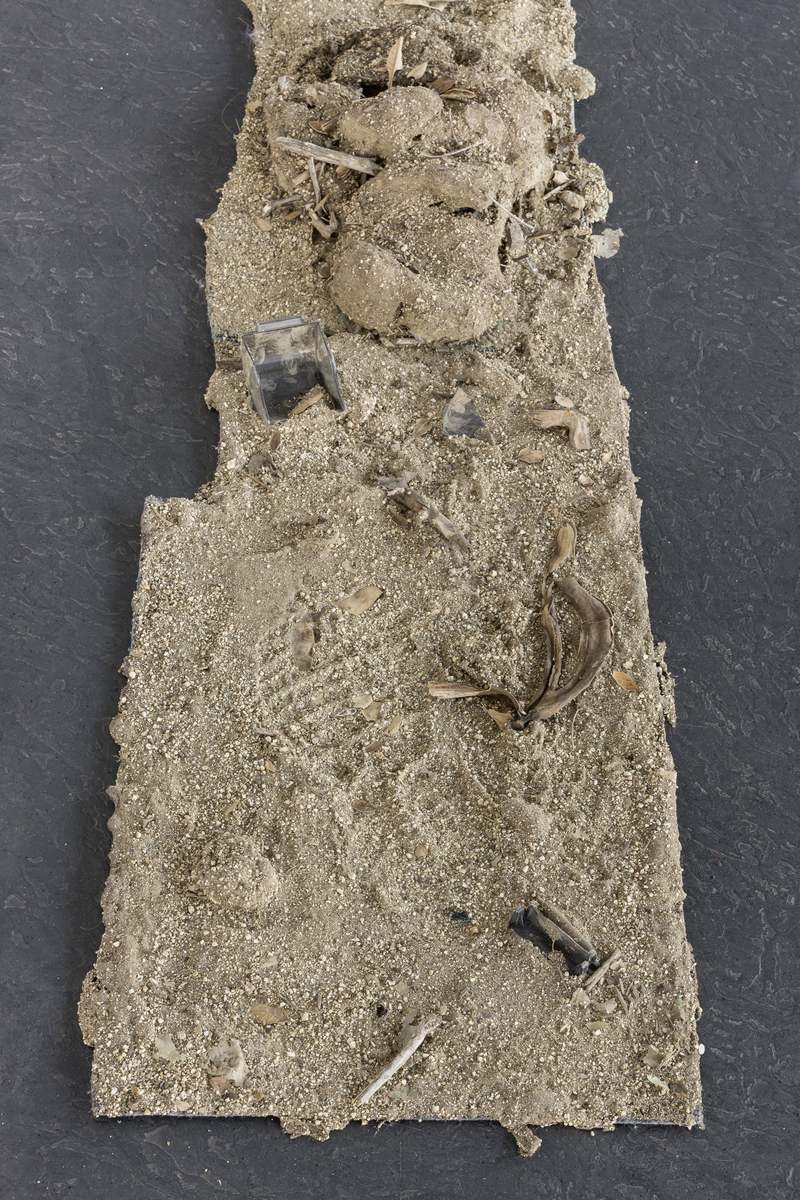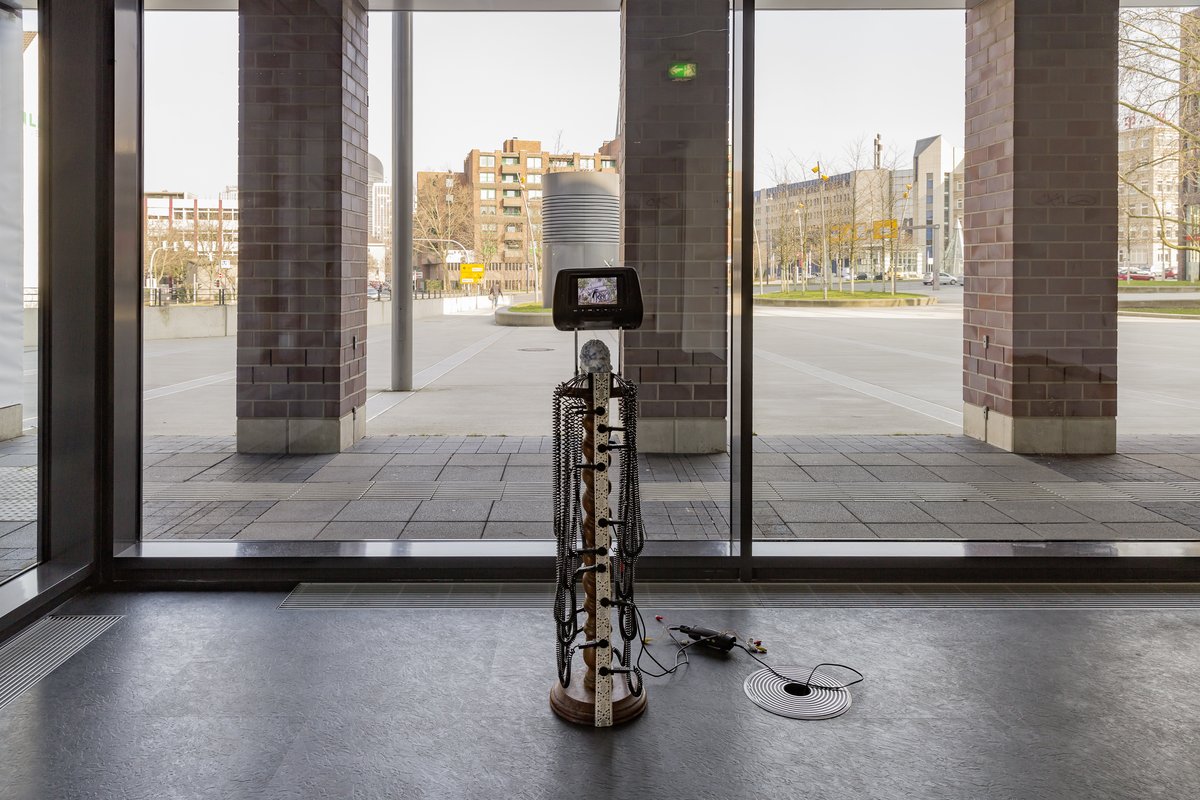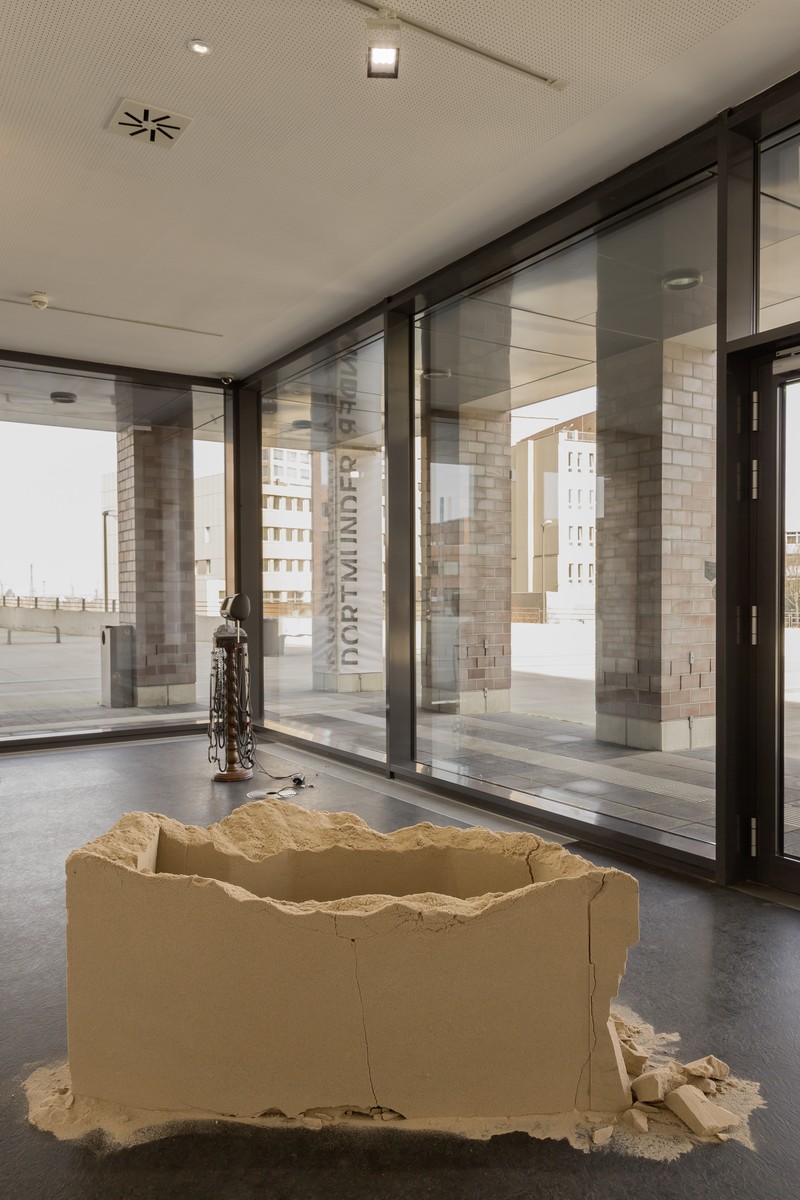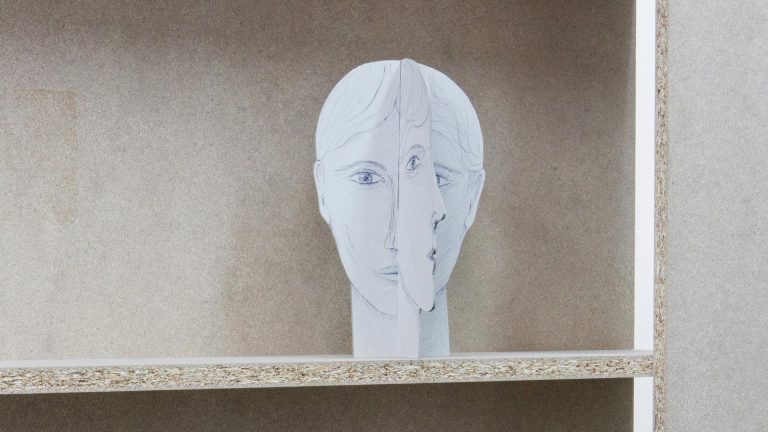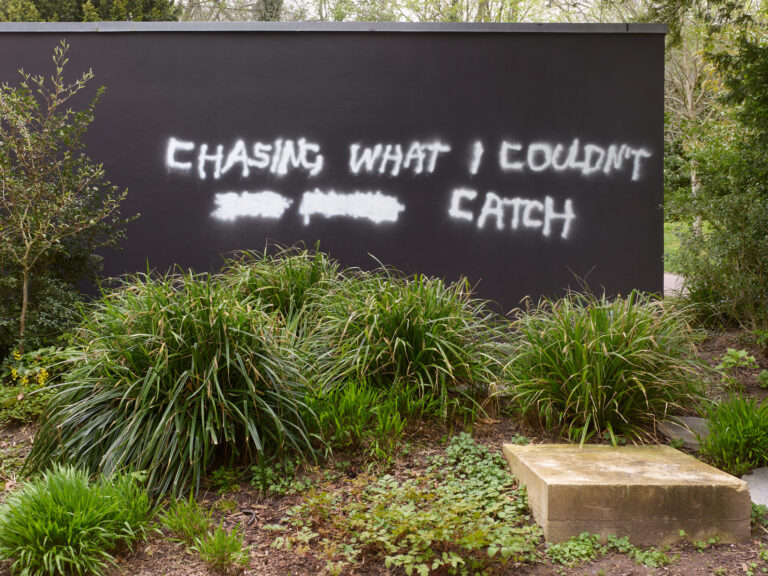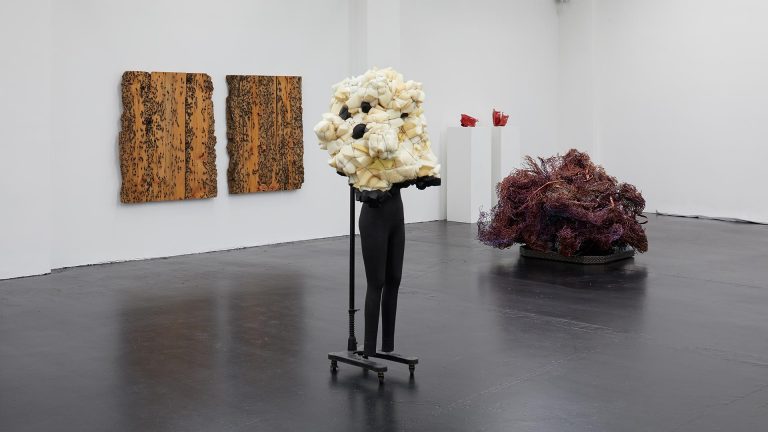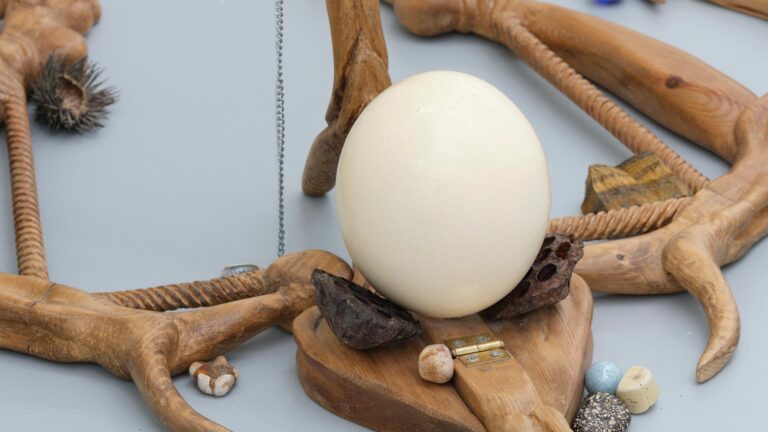Artists: Rochelle Goldberg, Tiril Hasselknippe, Veit Laurent Kurz, Martin Schepers, Raphaela Vogel, Phillip Zach
Exhibition title: ROADSIDE PICNIC
Venue: Dortmunder Kunstverein, Dortmund, Germany
Date: March 5 – May 22, 2016
Photography: Roland Baege, images copyright and courtesy of the artists and Dortmunder Kunstverein
The exhibition ‘Roadside Picnic’ features drawings and sculptures of six young, contemporary artists which are interested in the fusion between nature and technology. The works by Rochelle Goldberg (*1984 in Vancouver, CA), Tiril Hasselknippe (*1984 in Arendal, NO), Veit Laurent Kurz (*1985 in Erbach, GER), Martin Schepers (*1979 in Lengerich, GER), Raphaela Vogel (*1988 in Nürnberg, GER) und Phillip Zach (*1984 in Cottbus, GER) respond with haptic and sensory materiality to the new, digital technologies.
Arkadi und Boris Strugazki‘s science fiction story ‘Roadside Picnic‘ lays the foundation for the eponymous exhibition. The novel from 1979, which inspired Andrei Tarkowski to the movie ‘Stalker‘, tells a story about the relationship between the citizens of the city Harmont and the objects that were left by extraterrestrians after a visit to earth. Some of those objects are actually still functioning proof of alien technology. The ‘Zone’, in which they are situated, is overgrown by nature and sealed off to the outside. The only persons who are allowed to enter are the scientists of the city. However, tomb raiders intrude into the zone and take the alien artefacts with them to sell them on the black market. Strange alterations of nature and the tomb raiders themselves are the consequences.
Nowadays, our highly technologised society conveys – not unlike the alien technology in ‚Roadside Picnic‘– an impression of infinite and promising possibilities, but at the same time a growing feeling of menace. How does a cat deal with a printer that spits out paper? How does a dog encounter a vacuum cleaner? Or an insect the remains of a roadside picnic? What emerges in the imagination of people who see themself opposed to drones, the internet or other digital technology of which only the producers know the mystery of their production and which effects have become incomprehensible and uncontrollable, even for their makers?
In the middle between nature and technology and with a penchant for science fiction, the works by the six artists express, in different ways, something magical and uncanny, something decayed, but also something vital and sometimes something ancient and at the same time post-apocalyptic.
The unique constructions, which are depicted in the drawings by MARTIN SCHEPERS, seem to be of scientific nature, but at the same time they bear an extraterrestrial function. In the sculptures and installations by ROCHELLE GOLDBERG and VEIT LAURENT KURZ, the material hints on special radiant forces and energies. It remains unclear whether this fusion is poisoning humans and nature or if it is good for them. The sand and concrete sculptures by TIRIL HASSELKNIPPE, which correspond to individual parts of architectural shapes, the line between architecture and nature, past and future and material and function is blurred. They seem as if they were coming from a strip mine. PHILLIP ZACH‘S lays the floor with carpet pieces made of soil, plastic foam and litter. His works remind the viewer of a game of Tetris and forensic soil samples at the same time. Besides, they might just depict an archaeological proof of a roadside picnic and therefore radiate the feeling of a post-human age.
RAPHAELA VOGEL‘S works seem like hybrids between man, animal and machine: the way of use of technological devices or digital technologies, like the headrest in the car which is fitted with a monitor, action cameras and the content that is transmitted by them let the digital become a part of nature and nature a part of the digital. With all these topics, Roadside Picnic reviews the relics and visions of the industrial age in the Ruhr area. Does not the Thomas Converter at the Pheonix Lake in Dortmund seem like an object from another planet?
As if from another planet are also the sounds in the performance SOFT REVOLUTION by MARKUS KARSTIEß (*1971 in Haan/ Rhld, GER.) and CHRISTIAN JENDREIKO (* 1969 in Recklinghausen, GER). Using the Tensegrity structures by R. Buckminster Fuller and Kenneth Snelson, the two artists have designed a string instrument which makes three force fields interact: The human, the artefact and the play of tension and compression. The performance takes place on Saturday, April 23rd at 4.00 p.m. in the Kunstverein.






